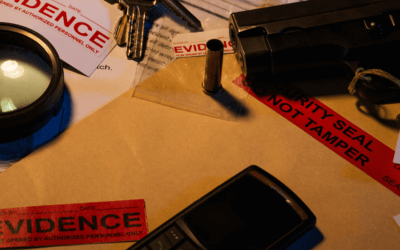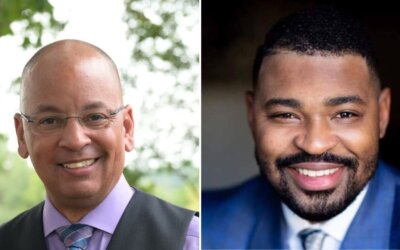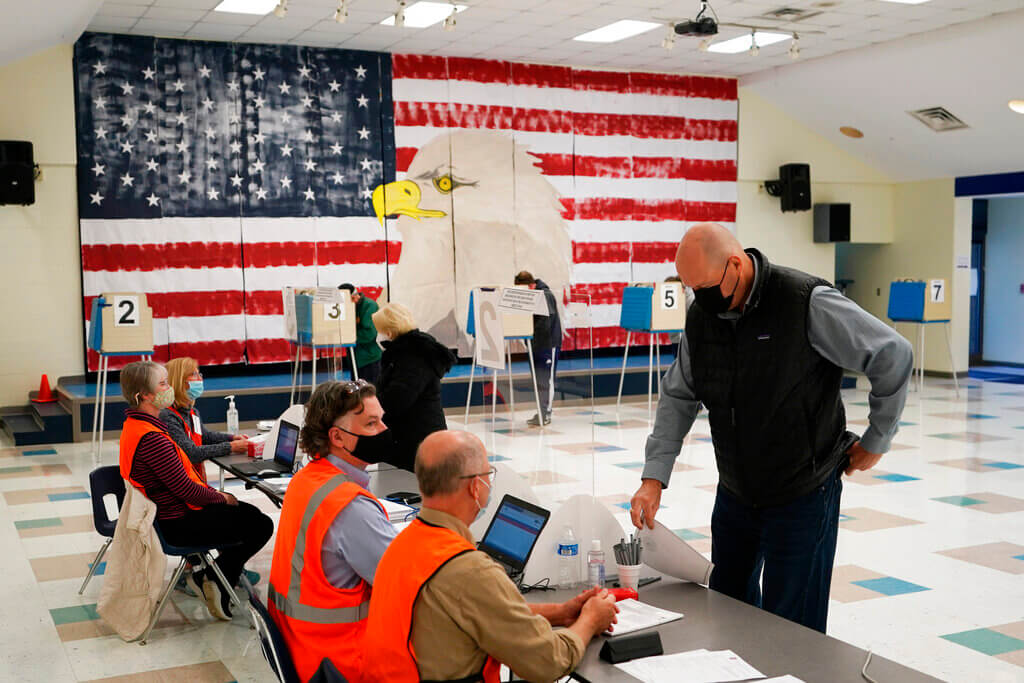
A voter check with the registration table as he prepares to cast his ballots under a giant mural at Robious Elementary school on Election Day, in Midlothian, Va., Tuesday Nov. 3, 2020. (AP Photo/Steve Helber)
All the steps you never knew about when it comes to getting your ballot, making sure it’s properly counted, and auditing the results.
So, you’ve done your part, filled in the circle, fulfilled your civic responsibility. Or maybe you are headed to the polls on Nov. 2 to vote on Election Day. Congratulations! But have you ever wondered what happens next? Buckle in, we’re getting into the nuts and bolts (literally) of election day in Virginia.
1. Design the Ballot for Accuracy and Accessibility
Before you get your ballot, there are actually people in charge of designing the paper and programming the machines ahead of the election. Dogwood spoke with Andrea Gaines from the Virginia Department of Elections to find out more.
2. Get Your Equipment and Paper to the Precincts
“The ballots are specific for each vendor,” Gaines said. Only ballots specifically printed for use in the machine can be read into the tabulators. Virginia has four vendors and four voting systems, and requires every ballot to be cast on voter-verified paper ballots and scanners [tabulators] are used in all localities.”
In some places, there are aggregated precincts that can print ballots on site, based on the individuals that come through. An example would be Chesterfield County’s use of their library branches as early voting locations for voters from multiple precincts. When a voter goes through the check-in process, their ballot gets printed on the spot. However ON election day, the ballots are specific to the precinct location.
3. Test the Voter Machines and Ballots for Accuracy
Oh, and before you even see the physical ballot, voting machines go through logic and accuracy testing before being used in an election.
“This is where every locality tests every voting unit, every ballot, and all the programming for the election for accuracy,” Gaines said. The scanners and ballots that pass testing are used for the election.
4. This Is Where YOU Come In!
Registered voters get their ballots and do their thing!
5. Votes are Counted by Prescreened Machines
So, your ballot gets counted and sorted by the tabulator, and the results are reviewed by election officials “to ensure all candidates received the votes accurately and all ballot positions were read.”
6. Votes Are Reviewed by Election Officials and Data Scientists
After each election in Virginia, an audit is conducted. According to Gaines, they conduct a statistical random sampling of ballots to confirm the accuracy of election results. This is sometimes confused with recounts. Unlike recounts, audits occur annually. You can view the audit from the 2020 election here.
“A recount is either required by statute or ordered by the courts” to re-evaluate the accuracy of specific contests or full elections, said Gaines.

VIDEO: Your support matters!
Your support matters! Donate today. @vadogwoodnews Your support matters! Visit our link in bio to donate today. #virginianews #virginia #community...
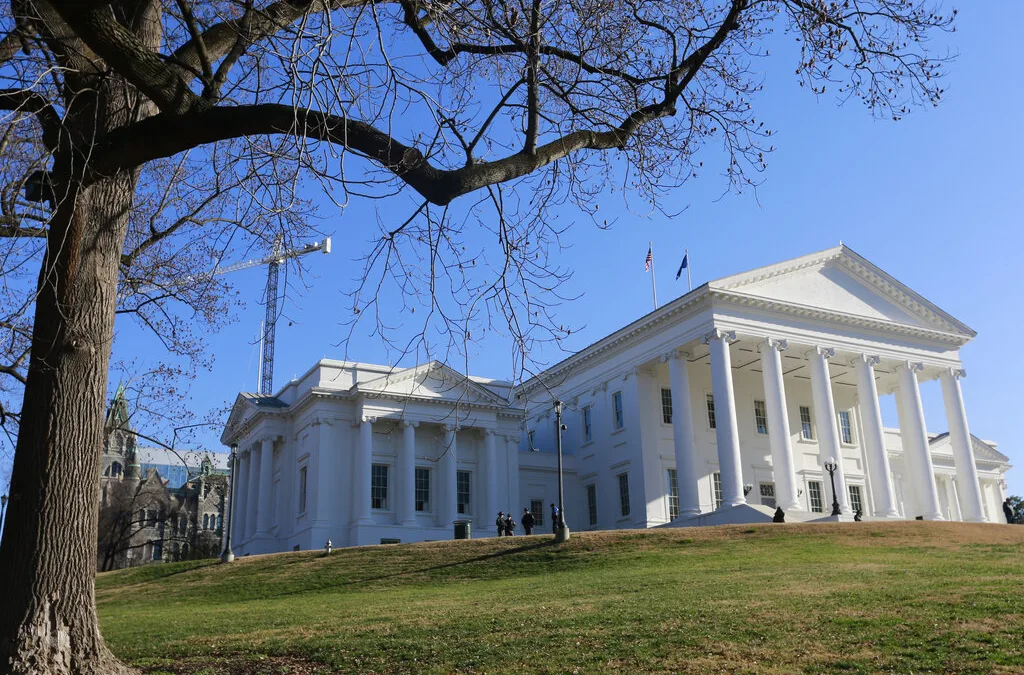
Op-Ed: Virginia’s new Democratic majorities pass key bills to improve your lives, but will Youngkin sign them?
The 2024 Virginia General Assembly regular session has wrapped up. It was a peculiar session from the outset, with Democratic majorities in the...
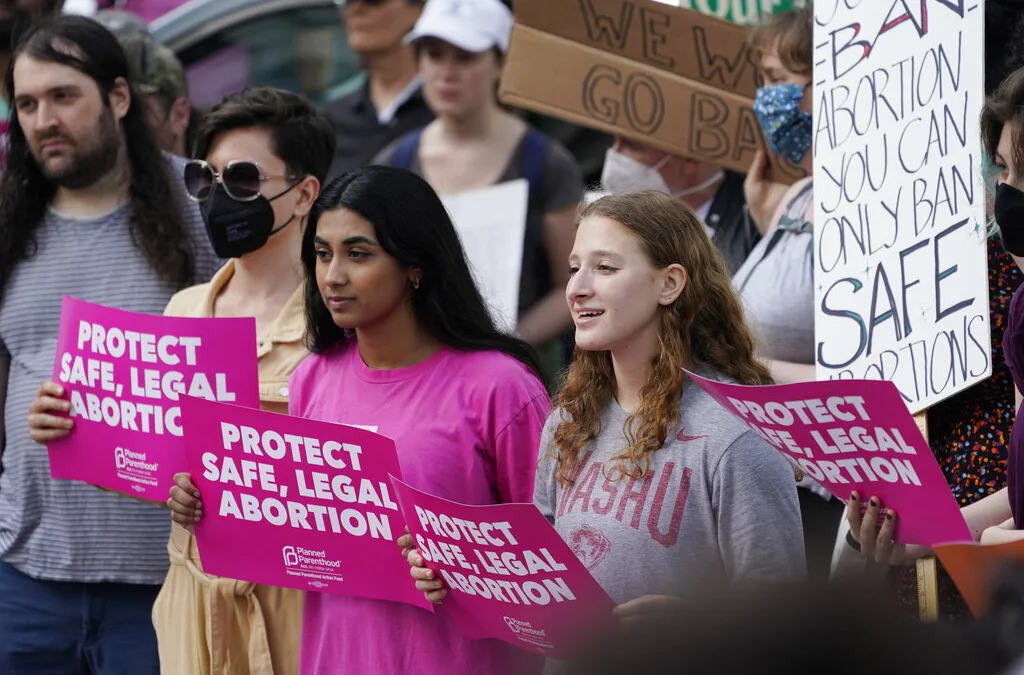
Op-Ed: Why Virginia Needs A Constitutional Amendment Protecting Reproductive Freedom
Virginia’s recent election season in 2023 drew in eyes from all over the country. Reproductive freedom was on the line and Virginia remained the...

From the state rock to the state flower, here’s how Virginia got its symbols
Have you ever wondered why the Dogwood is the state flower? Or how the cardinal became the state bird? We’re here to answer those questions and more...

VIDEO: Second-gentleman Douglas Emhoff gives speech on reproductive freedom
Second gentleman, Douglas Emhoff touched on reproductive freedom not only being a woman's issue but "an everyone's issue" during the Biden-Harris...

Glenn Youngkin and the terrible, horrible, no good, very bad night
Election Day 2023 has come and gone, and while there are votes to be counted, one thing is perfectly clear: Virginians unequivocally rejected Gov....


